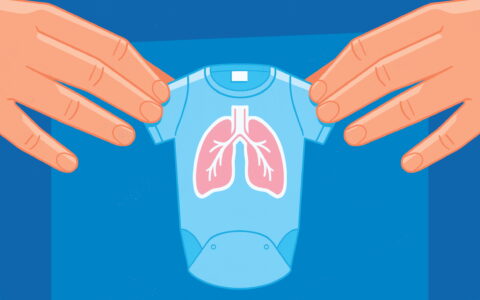Uncertainty has clouded the question of whether piperacillin-tazobactam or cefepime is safer for empirical treatment of infections in hospitalized patients. Now, randomized controlled trial results published in the Journal of the American Medical Association have clarified matters.
This large study, on data collected in a hospital setting, found that cefepime slightly increased the risk of neurotoxicity, ranging from agitation to coma, while piperacillin-tazobactam did not increase the risk of acute kidney injury or death.
“The comparative efficacy and safety of the two drugs had not been studied in a prospective, rigorous fashion before our trial,” said lead author Edward T. Qian, M.D., an assistant professor of pulmonary and critical care medicine at Vanderbilt University Medical Center.
“In a number of retrospective, observational studies, piperacillin-tazobactam use was associated with creatinine elevation, which may signify kidney injury, particularly when it’s used with vancomycin, which is a common combination,” he said.
And in retrospective, observational studies, cefepime had been associated with neurotoxicity, he added.
Trial Defines Risks
“Many physicians have been using piperacillin-tazobactam and cefepime interchangeably. Many others had moved away from piperacillin-tazobactam because of this supposed risk of kidney injury,” Qian said.
The researchers studied health outcomes for 2,511 admitted patients for whom a clinician ordered an antipseudomonal antibiotic within 12 hours of the patient’s arrival in the ED or the ICU at Vanderbilt between November 10, 2021, and October 7, 2022. The majority of the patients, 1,939, were also receiving vancomycin.
Kidney Troubles Similar
Study participants were randomized 1:1 to receive either cefepime or piperacillin-tazobactam and outcomes measured 14 days later.
The highest stage of acute kidney injury or death was not significantly different between the cefepime group and the piperacillin-tazobactam group. Seven percent of the patients taking cefepime developed stage 3 acute kidney injury, and 7.6 percent of the cefepime group died. Among patients taking piperacillin-tazobactam, 7.5 percent developed stage 3 acute kidney injury and 6 percent died.
About 10 percent of patients taking cefepime experienced major adverse kidney events at day 14, which was similar to about 9 percent of those taking piperacillin-tazobactam.
Patients in the cefepime group experienced slightly fewer days alive and free of delirium or coma within 14 days (11.9 days) than those in the piperacillin-tazobactam group (12.2 days)
Piperacillin-Tazobactam Reconsidered
“Although a lot of physicians had moved away from piperacillin-tazobactam because of this supposed risk of kidney injury, we didn’t see that,” Qian said. “We found no evidence of increased kidney injury or death with piperacillin-tazobactam. However, we did see more delirium in the patients receiving cefepime.”
“We found no evidence of increased kidney injury or death with piperacillin-tazobactam. However, we did see more delirium in the patients receiving cefepime.”
His team is starting to look into which preexisting factors – perhaps the dosage or preexisting renal dysfunction – are associated with heightened neurotoxicity in a patient taking cefepime.
Standout Statistics
The highest stage of acute kidney injury or death was not significantly different between the cefepime group and the piperacillin-tazobactam group. Seven percent of the patients taking cefepime developed stage 3 acute kidney injury, and 7.6 percent of them died. In comparison, 7.5 percent of the patients taking piperacillin-tazobactam developed stage 3 acute kidney injury and 6 percent died.
About 10 percent of patients taking cefepime experienced major adverse kidney events at day 14 compared to about nine percent of those taking piperacillin-tazobactam.
As for neurotoxicity, patients in the cefepime group experienced fewer days alive and free of delirium and coma within 14 days (11.9 days) than those in the piperacillin-tazobactam group (12.2 days).





